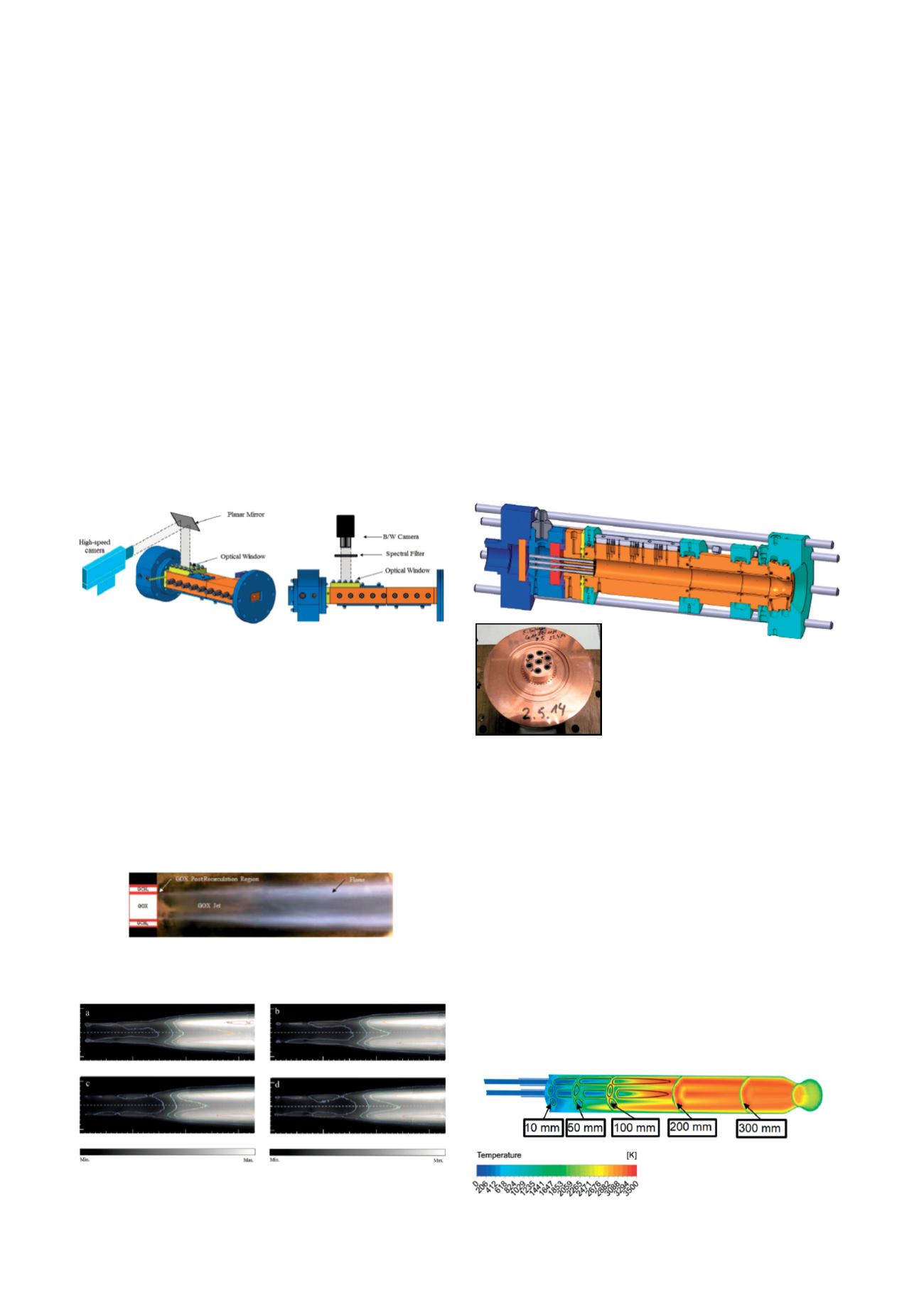

146
Space Propulsion
Liquid propellant rocket engine technologies
n
In 2017 our focus in the field of space propulsion has been equally distributed between experimen-
tal and numerical research into various aspects of injection, ignition, combustion and heat transfer
in methane/oxygen combustion applications for rocket engines. Particularities of cryogenic injection
and atomization under low pressure conditions and an ignition system based on resonance phenom-
ena have been investigated within a project jointly funded by the Brazilian CsF, the Chinese CSC,
Munich Aerospace and TUM. Studies of the behavior of methane/oxygen injectors towards their
impact on flame dynamics, combustion performance and heat transfer were the key topics within
projects funded by DFG, BFS and Ariane Group. In addition, the group continued its effort in design
and operation of turbo-pump components for liquid propellant rocket engines.
Prof. Dr. Haidn was invited as a keynote lecturer to four
international propulsion conferences among which the
38th APTIS Conference in Dalian, China was the most
prestigious. In addition, the Harbin Institute of Technol-
ogy, a member of the Chinese C9 League Universities
appointed Prof. Dr. Haidn as Guest Professor.
Rocket Propulsion Technologies
are key for flame dynamics and combustion stability and
heat loads to the combustion chamber walls. Studies on
flame anchoring process and flame dynamics for various
injection conditions and start sequences have clearly
revealed the importance of an appropriate timing of the
injection conditions during engine start-up for flame
anchoring and combustion stability, see Figs. 1-3 which
show a sketch of the experimental set-up, an image of
the anchored flame and the impact of the propellant
mixture ratio on the axial distribution of the flame emission
intensity.
Specifically designed experimental single (Fig. 1) and
multi-injector setups (Fig. 4) allowed us to identify and
quantify phenomena unique for this propellant combina-
Figure 1: Experimental set-up for single injector element flame visualization
investigations
Figure 2: High speed image of the near-injector region of a methane/
oxygen single element model combustor
Figure 5: Temperature stratification
in a 7-injector model combustion
chamber
In the field of rocket propulsion technologies, the group
is focusing within 3 different projects funded by DFG and
BFS on numerical as well as experimental aspects of
methane/oxygen combustion, a propellant combination
which has recently seen increasing interest worldwide.
An aspect all three projects have in common is the desire
to further the understanding of dominating phenomena
behind injector/injector and injector wall interaction which
Figure 3: Iso-lines of identical OH-intensities for different propellant mixture
ratios of a = 2.2; b = 2.6; c = 3.0, d = 3.4
Figure 4: 7-Injector combustor
and injection head



















